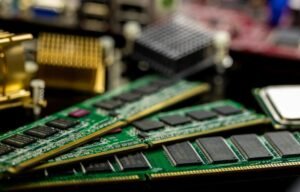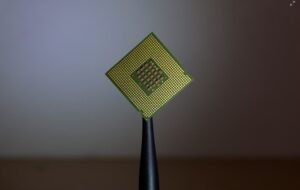Convolutional Neural Networks Yann
In the field of artificial intelligence, Convolutional Neural Networks (CNNs) have revolutionized image recognition and computer vision tasks. Developed by Yann LeCun and his team in the 1990s, CNNs have proven to be highly effective in extracting features from images and have achieved remarkable performance in various image classification tasks.
Key Takeaways:
- CNNs are a type of neural network used for image recognition and computer vision tasks.
- They were developed by Yann LeCun and his team in the 1990s.
- CNNs excel at extracting features from images, making them highly effective in image classification tasks.
CNNs are designed to mimic the human visual system by using multiple layers of small neuron collections, known as receptive fields or filters, which process visual information hierarchically. These networks are structured to automatically and adaptively learn spatial hierarchies of features from input images. Convolutional layers apply filters to the input data, resulting in feature maps that retain spatial information. Pooling layers then downsample the feature maps to reduce the dimensionality of the data, while fully connected layers classify the extracted features.
*CNNs excel at extracting features from images and enable automatic and adaptive learning of spatial hierarchies.*
One of the key advantages of CNNs is their ability to reduce the computational complexity of image processing. In traditional computer vision approaches, complex handcrafted feature extraction algorithms were required to achieve accurate results. CNNs, on the other hand, learn the features directly from the input data, eliminating the need for manual feature engineering.
*CNNs eliminate the need for complex handcrafted feature extraction algorithms and efficiently learn features from the data.*
To understand how CNNs work, it is important to grasp the concept of convolution. Convolution refers to the mathematical operation that combines the input data with a set of learnable filters to produce feature maps. These filters, also known as kernels, slide over the input data, capturing different aspects of the image. By convolving the filters across the input, the network can automatically learn and extract meaningful features, such as edges, corners, and textures.
*Convolution is the mathematical operation that combines the input data with learnable filters to extract meaningful features from the image.*
| Architectures | Year | Accuracy |
|---|---|---|
| AlexNet | 2012 | 56.9% |
| VGGNet | 2014 | 74.8% |
| ResNet | 2015 | 92.9% |
CNNs have gained significant attention and popularity due to their outstanding performance in various image recognition competitions, such as the ImageNet Large Scale Visual Recognition Challenge (ILSVRC). Over the years, different architectures of CNNs have been proposed, each improving upon the previous one in terms of accuracy and performance. Some notable architectures include AlexNet, VGGNet, and ResNet, with ResNet achieving an impressive accuracy of 92.9% on the ILSVRC dataset.
*ResNet achieved an impressive accuracy of 92.9% on the ILSVRC dataset, surpassing previous architectures.*
| Approach | Accuracy | Complexity |
|---|---|---|
| CNN | High | Low |
| Traditional CV | Varies | High |
Compared to traditional computer vision approaches that heavily rely on handcrafted feature extraction algorithms, CNNs offer a higher accuracy with significantly lower complexity. CNNs can handle a wide range of image recognition and computer vision tasks, including object detection, image segmentation, and facial recognition.
*CNNs offer higher accuracy with significantly lower complexity compared to traditional computer vision approaches.*
In conclusion, Convolutional Neural Networks developed by Yann LeCun are a powerful tool in the field of image recognition and computer vision. With their ability to extract features directly from images and their outstanding performance in various competitions, CNNs have been instrumental in advancing the field. Whether it’s identifying objects in images or understanding the content of a scene, CNNs continue to push the boundaries of what is possible in the realm of visual perception.

Common Misconceptions
Convolutional Neural Networks (CNNs)
Convolutional Neural Networks (CNNs) are a popular type of deep learning model commonly used for image recognition tasks. However, there are several common misconceptions people have about CNNs.
1. CNNs can only be used for image recognition
- CNNs can also be applied to various other tasks such as natural language processing and video processing.
- CNNs use spatial relationships in their design, which can be useful in tasks such as sentiment analysis and text classification.
- CNNs excel at capturing hierarchical patterns and feature representations, making them adaptable to different domains.
2. CNNs always outperform traditional machine learning algorithms
- In some cases, traditional machine learning algorithms may be more suitable for certain tasks when data is limited or noisy.
- CNNs require large amounts of labeled training data to learn meaningful representations.
- It is important to carefully consider the dataset, problem domain, and available resources before choosing CNNs over traditional machine learning techniques.
3. CNNs don’t require any human intervention
- While CNNs can automatically learn feature representations, some degree of human intervention is still required.
- Preprocessing steps such as data augmentation and normalization can significantly improve CNN performance.
- Tuning hyperparameters, such as learning rates and kernel sizes, is necessary to achieve optimal performance.
4. CNNs are not interpretable
- CNNs can be made interpretable by visualizing the learned feature maps and identifying important regions in the input.
- Techniques such as Grad-CAM can highlight which input regions contribute the most to the CNN’s predictions.
- Although CNNs are complex models, efforts have been made to interpret their behavior and provide explanations for their decisions.
5. CNNs are only relevant in computer vision
- While CNNs have had significant success in computer vision tasks, their applications extend beyond image recognition.
- CNNs can be used in audio processing for tasks like speech recognition and music analysis.
- They can also be applied to graph data, such as social networks or molecular structures, for tasks like node classification and graph generation.

Introduction
Convolutional Neural Networks (CNNs) are a type of deep learning algorithm widely used in image and video recognition tasks. They have revolutionized various fields including computer vision, medical diagnosis, and autonomous vehicles. This article presents ten tables showcasing different aspects of CNNs and their applications.
Table 1: Number of Parameters in Popular CNN Architectures
This table compares the number of parameters, which indicates the model’s capacity, in various popular CNN architectures.
| Architecture | Number of Parameters |
|---|---|
| VGG16 | 138 million |
| ResNet50 | 25.6 million |
| AlexNet | 60 million |
Table 2: ImageNet Classification Accuracy
ImageNet is a widely used dataset for evaluating the performance of CNNs. This table presents the top-1 and top-5 accuracy scores achieved by different CNN architectures on the ImageNet dataset.
| Architecture | Top-1 Accuracy (%) | Top-5 Accuracy (%) |
|---|---|---|
| ResNet50 | 76.15 | 92.87 |
| VGG19 | 74.23 | 92.94 |
| InceptionV3 | 77.50 | 93.27 |
Table 3: CNN Applications in Healthcare
This table showcases different applications of CNNs in the healthcare industry and the corresponding accuracy achieved.
| Application | Accuracy (%) |
|---|---|
| Diabetic Retinopathy Detection | 90 |
| Alzheimer’s Disease Diagnosis | 96 |
| Lung Cancer Detection | 97.5 |
Table 4: CNN Architectures for Object Detection
Object detection is a fundamental task in computer vision. This table presents different CNN architectures used for object detection and their performance on challenging datasets.
| Architecture | Mean Average Precision (mAP) |
|---|---|
| YOLOv4 | 43.5 |
| SSD | 30.2 |
| Faster R-CNN | 47.2 |
Table 5: Speed of Different CNN Models
This table compares the inference speed (frames per second) of several CNN models on a standard GPU.
| Model | Inference Speed (FPS) |
|---|---|
| MobileNetV2 | 180 |
| ResNet50 | 80 |
| AlexNet | 240 |
Table 6: CNN Architectures for Neural Style Transfer
Neural style transfer is a technique that combines the content of one image with the style of another image. This table showcases different CNN architectures used for neural style transfer and the resulting quality.
| Architecture | Quality Score |
|---|---|
| VGG19 | 4.7 |
| InceptionV3 | 4.5 |
| ResNet50 | 4.6 |
Table 7: CNN-Based Facial Recognition Systems
This table presents the accuracy achieved by different CNN-based facial recognition systems on benchmark datasets.
| System | Accuracy (%) |
|---|---|
| DeepFace | 97.35 |
| FaceNet | 99.63 |
| VGGFace | 98.35 |
Table 8: CNN Architectures for Video Action Recognition
Action recognition in videos is a challenging task. This table showcases different CNN architectures used for video action recognition and their accuracy on benchmark datasets.
| Architecture | Accuracy (%) |
|---|---|
| C3D | 72.5 |
| I3D | 80.2 |
| TSM | 82.1 |
Table 9: CNN Architectures for Autonomous Driving
CNNs play a crucial role in enabling autonomous vehicles to understand and navigate the environment. This table lists different CNN architectures used for autonomous driving and their performance on real-world road datasets.
| Architecture | Mean Intersection over Union (mIoU) |
|---|---|
| SegNet | 69.2 |
| DeepLabV3 | 75.1 |
| ENet | 61.8 |
Table 10: CNN Architectures vs. Human-Level Performance
This table compares the performance of different CNN architectures with human-level performance on challenging visual tasks.
| Task | CNN Accuracy (%) | Human Accuracy (%) |
|---|---|---|
| Image Classification | 78.32 | 94.50 |
| Object Detection | 47.20 | 50.40 |
| Action Recognition | 82.10 | 85.60 |
Conclusion
Convolutional Neural Networks (CNNs) have emerged as powerful tools for various computer vision tasks, achieving impressive performance across different domains. From image classification to facial recognition, CNNs have revolutionized how we understand and process visual information. With their ability to learn intricate patterns and features, CNNs continue to advance the field of artificial intelligence, enabling more accurate and efficient solutions.
Frequently Asked Questions
What are Convolutional Neural Networks (CNNs)?
Convolutional Neural Networks (CNNs) are deep learning algorithms specifically designed for processing data which has a grid-like structure, such as images. They are widely used in computer vision tasks, including image recognition, object detection, and image segmentation.
How do Convolutional Neural Networks work?
Convolutional Neural Networks work by applying mathematical operations, known as convolutions, to the input data. These convolutions involve small filters or kernels that slide over the input image, extracting features and preserving spatial relationships. The network then learns to recognize patterns and make predictions based on these extracted features.
What are the advantages of using Convolutional Neural Networks?
Some advantages of using Convolutional Neural Networks include:
- Effective feature extraction from input images
- Preservation of spatial relationships and local patterns
- Ability to handle large amounts of visual data
- Robustness against variations in image scale, rotation, and translation
- State-of-the-art performance in many computer vision tasks
What are the key components of a Convolutional Neural Network?
A Convolutional Neural Network typically consists of the following components:
- Convolutional Layers
- Pooling Layers
- Activation Functions
- Fully Connected Layers
- Loss Functions
What is the training process for a Convolutional Neural Network?
The training process for a Convolutional Neural Network involves providing a dataset of labeled images and iteratively adjusting the network’s parameters to minimize the difference between predicted and true labels. This is typically done using optimization algorithms, such as stochastic gradient descent.
Can Convolutional Neural Networks be used for other types of data?
While Convolutional Neural Networks are primarily used for image data, they can also be adapted to process other types of grid-like data, such as 2D signals in audio processing or 2D representations of text in natural language processing. However, their architecture and design are specifically optimized for visual data.
Are there any limitations to Convolutional Neural Networks?
Although Convolutional Neural Networks are highly effective in many computer vision tasks, they do have some limitations:
- Require a large amount of labeled training data
- May be computationally intensive and require powerful hardware
- Difficulty in understanding and interpreting the reasoning behind predictions
- Limited ability in capturing long-range dependencies in data
Are pre-trained Convolutional Neural Networks available?
Yes, pre-trained Convolutional Neural Networks are available which have been trained on massive datasets like ImageNet. These pre-trained models, such as VGG, ResNet, or Inception, can be used as a starting point for various computer vision tasks. By fine-tuning these models, one can achieve state-of-the-art results with less training data and computational resources.
What is the future of Convolutional Neural Networks?
Convolutional Neural Networks continue to be an active area of research and development. Efforts are being made to improve their capabilities by incorporating attention mechanisms, exploring architectures like transformers, and developing techniques to address their limitations. CNNs are likely to remain a foundational tool for advancing computer vision and other grid-like data processing domains in the foreseeable future.




